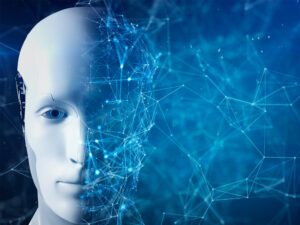 In the previous blog, we tried to understand what Artificial Intelligence, essentially, means. We also looked at its significant applications that have already started to materialize across the world. But you’ll be fascinated to know that there isn’t just the AI. There are seven different types of Artificial Intelligence classified based on two criteria. Today, we shall take a more in-depth look into what these types are and their applications in the present and future world. We hope this makes an exciting read for you!
In the previous blog, we tried to understand what Artificial Intelligence, essentially, means. We also looked at its significant applications that have already started to materialize across the world. But you’ll be fascinated to know that there isn’t just the AI. There are seven different types of Artificial Intelligence classified based on two criteria. Today, we shall take a more in-depth look into what these types are and their applications in the present and future world. We hope this makes an exciting read for you!
Artificial Intelligence is all about building intelligent machines from vast volumes of data and getting them to perform human-like tasks, leading to an enhancement in speed, precision, and effectiveness of human efforts. Hence, the classification of AI also stems from the degree to which it replicates humans. Following are the two ways AI is classified:
Based on capabilities:
Narrow AI
Almost all the AI applications created to date fall under Narrow or Weak AI. It refers to AI systems that can perform a single specific task autonomously using human-like capabilities and cannot perform beyond its limitations. Although they have a very narrow range of competencies, they are becoming increasingly common in our daily lives. The most common examples include virtual assistants such as Siri, which operates with a pre-defined limited set of functions. Similarly, image recognition software or translation apps such as Google Translate also fall under narrow AI.
General AI
General AI, also known as strong AI, can learn, perceive, understand, and function entirely like a human being. With the connections and logic it can build on its own, the training required for general AI is significantly less. However, researchers have not been able to achieve strong AI thus far. Large organizations worldwide have invested billions of dollars in developing strong AI – the most notable of them being Microsoft’s investment through Open AI.
Super AI
Super AI, whenever it materializes, shall be the most capable form of AI. It will replicate a human’s cognitive abilities and be exceedingly better at what humans do due to greater memory, faster data processing and analysis, and decision-making capabilities. Such a scenario is entirely hypothetical at the moment, though.
While Super AI presents great potential, many researchers are highly concerned that such systems will threaten our existence or our lifestyle.
Based on functionalities:
Reactive Machine
This is the oldest form of AI with the basic of functionalities. It emulates the human mind’s ability to react to a situation but does not learn from the situation. Hence, it does not depend on memory to take action in the present. It is provided with a specific task and cannot perform beyond that task.
The most famous example was IBM’s Deep Blue that defeated chess grandmaster Garry Kasparov in 1997. It could see all the chessboard pieces and kept reacting to each situation with a new move without storing data for the previous move. However, it could predict all the possible moves Garry could make and choose from its own set of possible moves.
Limited Memory
Limited Memory machines go a step further  than what Reactive Machines can do. They are also capable of learning from historical data to make decisions. Almost all of today’s AI applications run on Limited Memory systems. For example, an image recognition AI is first trained with thousands of labeled pictures. When a new image is presented to it, it scans and recognizes the image based on what it has learned from the training—the more the training, the better the accuracy. Limited Memory AI drives chatbots, virtual assistants, as well as self-driving vehicles.
than what Reactive Machines can do. They are also capable of learning from historical data to make decisions. Almost all of today’s AI applications run on Limited Memory systems. For example, an image recognition AI is first trained with thousands of labeled pictures. When a new image is presented to it, it scans and recognizes the image based on what it has learned from the training—the more the training, the better the accuracy. Limited Memory AI drives chatbots, virtual assistants, as well as self-driving vehicles.
Theory of Mind
Theory of Mind AI, although mostly hypothetical at the moment, represents an exciting potential. By definition, it shall understand humans as entities who have emotions, sentiments, and thoughts. While many improvements have been made in the field, the Theory of Mind remains an undeveloped area.
Self-Aware
Self-aware AI is another that is only hypothetical at the moment. However, this form of AI is the ultimate goal of any AI researcher. Not only will it be able to understand human emotions, traits, and thoughts, it will also have its understanding, feelings, and potentially desires of its own. While this may sound exciting, many researchers are fearful of such a scenario. Mainly, if a self-aware AI system develops, for example, self-preservation thoughts may spell the end for humanity. Self-aware AI will be so developed and capable that it shall outperform humans in every aspect.
Conclusion
All the seven types of AI are at different levels of replicating human capabilities. Some of them are a reality, while others are tough to predict when they become one. Nonetheless, we must keep ourselves aware of AI developments as it has already begun impacting our lives heavily.
We hope that you found the article interesting. If you have any questions, please reach out to us and stay tuned to our Knowledge Corner as we move to understand AI’s impact on robotics.



